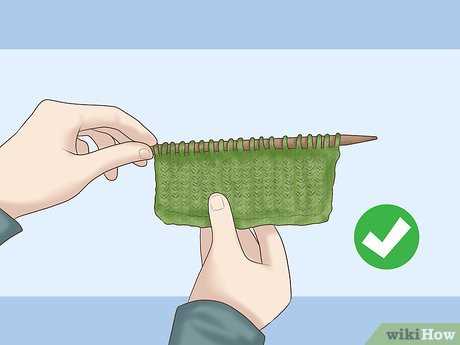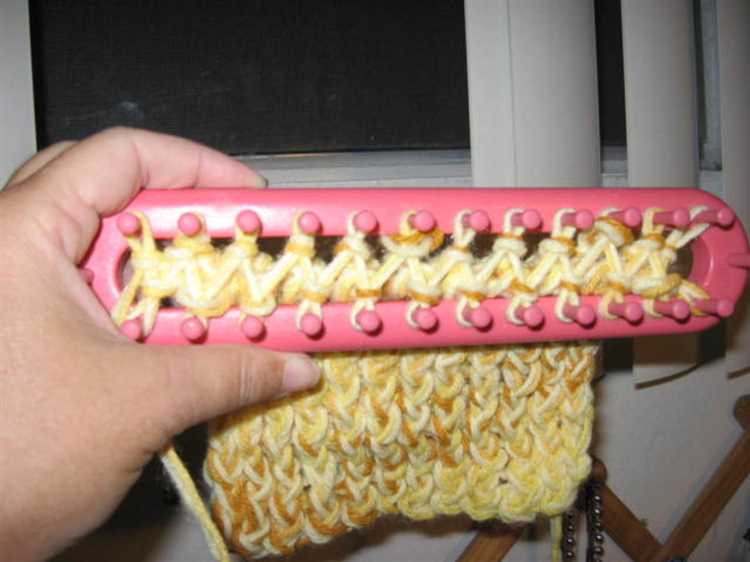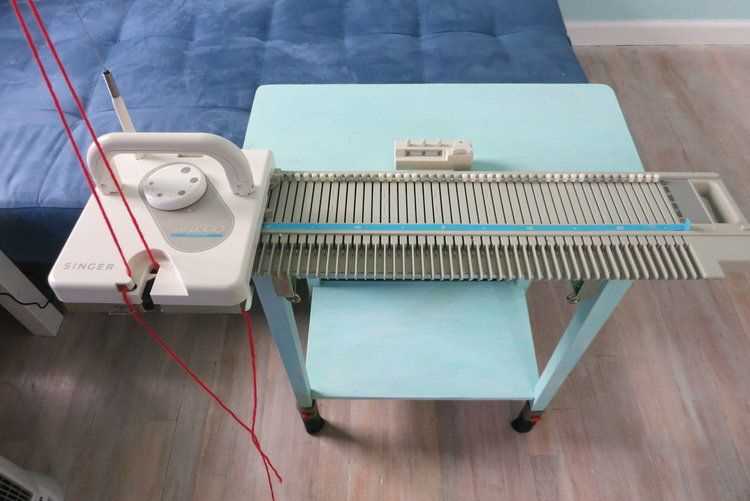If you’ve recently taken up knitting and have successfully completed a beautiful scarf, congratulations! Now it’s time to learn how to cast off and finish your project. In this step-by-step guide, we will walk you through the process of casting off your knitting and creating a neat and professional-looking edge.
First, let’s start by explaining what casting off means in knitting. Casting off, also known as binding off, is the final step in completing your knitting project. It involves removing the stitches from your knitting needles in a way that creates a finished edge. Casting off is essential to prevent your scarf from unraveling and to give it a polished look.
To begin casting off, you will need your knitting needles, a pair of scissors, and a yarn needle. Start by knitting the first two stitches as usual. Then, using your left-hand needle, lift the first stitch over the second stitch and off the right-hand needle. You have now cast off one stitch.
Continue this process, knitting the next stitch and then lifting the previous stitch over it. Repeat until you have cast off all the stitches, except for the last one. To finish off, cut the yarn, leaving a tail of about 6 inches. Thread the tail through the yarn needle and pull it through the last stitch. Gently tighten the stitch and weave in any loose ends for a clean finish.
Remember to take your time and practice this technique. Once you’ve mastered casting off, you’ll be able to finish off all your knitting projects with ease. Happy knitting!
Why is Casting Off Important in Knitting?
Casting off, also known as binding off, is an essential step in knitting that helps to finish and secure your project. It involves closing the stitches at the end of your work to prevent them from unraveling and creating a neat edge.
There are several reasons why casting off is important:
- Prevents unraveling: After spending hours knitting a project, the last thing you want is for it to unravel. By casting off, you secure the stitches and prevent them from coming undone.
- Creates a clean edge: Casting off gives your knitting a polished finish by creating a neat and even edge. This is especially important for projects such as scarves, blankets, or clothing where the edges will be visible.
- Defines the final size: The number of stitches you cast off determines the width of your finished piece. This is crucial for ensuring that your project turns out the desired size and shape.
- Allows for blocking: Blocking is a process where you shape and stretch your knitted item to give it a more professional look. Casting off makes it easier to block your project evenly and maintain its shape.
When casting off, it’s important to maintain an even tension to ensure a consistent edge. You can use different casting off methods depending on the desired effect, such as a basic bind-off or a decorative stretchy bind-off.
Overall, casting off is an essential skill in knitting that helps to complete your projects with a professional finish and ensures that your hard work doesn’t unravel.
The Different Methods of Casting Off
Casting off is a crucial step in finishing your knitting project. It involves removing the stitches from your needles to create a finished edge. There are several different methods of casting off, each with its own advantages and uses. In this article, we will explore some of the most common methods.
1. Basic/Standard Cast Off: This is the most commonly used method of casting off. To perform a basic cast off, you knit two stitches, then use the left-hand needle to lift the first stitch over the second stitch and off the needle. Repeat this process until you have cast off all your stitches.
2. Sewn Bind Off: The sewn bind off method creates a stretchy edge and is often used for cuffs and hems. To perform this method, you first knit two stitches, then insert the left-hand needle into the first stitch knitwise and slip it onto the right-hand needle. Repeat this process until you have slipped all the stitches onto the right-hand needle. Finally, use a tapestry needle to sew through the loops and secure the edge.
3. Tubular Bind Off: The tubular bind off method is commonly used for ribbed edges to create a neat, flexible finish. It involves working the knitting in a combination of knit and purl stitches. This method takes a bit more time and concentration, but the result is worth it.
4. I-Cord Bind Off: The I-cord bind off method is used to create a decorative and flexible edge. It involves knitting a small tube of stitches and then binding them off. This method is often used for necklines and edges of shawls.
5. Picot Bind Off: The picot bind off method adds a decorative edge to your knitting. It involves creating small loops along the edge by casting on additional stitches and then binding off those stitches together with the original stitches.
6. Three-Needle Bind Off: The three-needle bind off method is used to join two pieces of knitting together. It involves using a third needle to bind off the stitches from both needles at the same time, creating a strong and seamless seam.
These are just a few of the many casting off methods available to knitters. Each method has its own unique characteristics and applications, so it’s worth exploring and experimenting with different techniques to find the one that works best for your project.
Step 1: Preparing to Cast Off
Before you can begin casting off your knitting project, you’ll want to make sure you have everything you need and that your stitches are in the correct position. Follow these steps to prepare for casting off:
- Gather your supplies: Before you start casting off, make sure you have a pair of yarn scissors or a yarn cutter nearby. You’ll also need a darning needle or a tapestry needle to weave in the loose ends after casting off.
- Check your stitch count: Take a moment to count the number of stitches you have on your needle. This will help you keep track of how many stitches you cast off and ensure that you don’t accidentally skip any stitches.
- Position your stitches: Make sure your stitches are arranged properly on your needle. The last stitch you knitted should be closest to the needle tip, and the first stitch you cast on should be closest to the base of the needle. Double-check that your stitches are not twisted or out of order.
- Leave a long enough tail: When you reach the end of your last row, leave a tail of yarn that is at least three times the width of your knitting project. This tail will be used to weave in the loose ends later on, so it’s important to have enough length.
- Take a deep breath: Casting off can be a little nerve-wracking, especially if you’re new to knitting. Remember to take a deep breath and relax before you start. Knitting is all about enjoying the process!
With these preparations in place, you’re now ready to start casting off your knitting project. The next step will guide you through the process of actually casting off your stitches.
Step 2: Casting Off the First Stitch
Once you have completed your final row of knitting, it’s time to cast off the stitches to finish your scarf. The first stitch can be a bit tricky, but with our step-by-step guide, you’ll be able to cast it off with ease.
- Start by knitting the first two stitches of the row as you normally would.
- Take the left-hand needle and insert it into the first stitch you knitted.
- Slip the first stitch over the second stitch and off the right-hand needle.
- Now you have one stitch remaining on your right-hand needle.
- Knit the next stitch as usual.
- Repeat steps 2-5 until you have cast off all stitches except for the last one.
Note: Casting off the first stitch creates a neat and seamless edge for your scarf.
By following these steps, you will have successfully cast off the first stitch of your scarf. You can continue to cast off the remaining stitches using the same method or explore other casting off techniques to add a decorative edge to your scarf.
Step 3: Continuing to Cast Off
Once you have cast off the first two stitches, you will continue the process of casting off until all stitches have been removed from the needle. Here’s how to do it:
- Knit the next stitch: Insert the right needle into the next stitch on the left needle, just as you would if you were going to knit it.
- Pass the previous stitch over: Take the left needle and pass it over the right needle, working the next stitch as if you were going to knit it.
- Continue casting off: Repeat steps 1 and 2 until only one stitch remains on the right needle.
By repeating these steps, you will gradually cast off each stitch from the left needle until only one stitch remains on the right needle. The cast off edge will be neat and secure, perfect for finishing off your scarf and preventing it from unraveling.
Remember to take your time and work at a comfortable pace. It’s important to maintain an even tension throughout to ensure an even and professional finish to your project.
| Step | Instructions |
|---|---|
| 1 | Knit the next stitch |
| 2 | Pass the previous stitch over |
| 3 | Repeat steps 1 and 2 until only one stitch remains |
Once you have cast off all stitches, you can finish off the end of your scarf by securing the last stitch. Simply cut the working yarn, leaving a tail of about 6 inches. Thread the tail through the last stitch and pull tight to secure.
Congratulations! You have successfully cast off your knitting scarf. Now you can enjoy your finished project or move on to the next knitting adventure.
Step 4: Finishing the Last Stitch
Once you have completed all the stitches in your scarf and reached the end of your last row, it’s time to finish off your knitting project and cast off the last stitch.
Here’s how you can finish the last stitch:
- Knit or purl the first stitch on your left-hand needle, depending on the stitch pattern you have been following.
- With your right-hand needle, insert it into the first stitch on your left-hand needle.
- Using your right-hand needle, lift the first stitch over the second stitch and off the left-hand needle.
- Repeat steps 2 and 3 until only one stitch remains on your right-hand needle.
Once you have finished the last stitch, you can carefully remove the needle from the stitch, making sure not to unravel the yarn. Your scarf is now completed!
To secure the final stitch, you can cut the yarn, leaving a tail of about 6 inches. Thread the tail through the last stitch and gently pull it tight to secure it.
Now you can admire your finished scarf and enjoy the warmth and comfort it will provide.
Additional Tips for Casting Off
Once you have mastered the basic technique of casting off, you can try some additional tips and variations to add a professional touch to your knitting projects. Here are a few ideas to consider:
- Experiment with tension: As you cast off, try adjusting the tension of your stitches to create different effects. A looser tension can result in a more relaxed and stretchy edge, while a tighter tension can create a neater and firmer edge.
- Use a larger needle: If you find that your cast-off edge is too tight and doesn’t match the tension of the rest of your knitting, you can switch to a larger needle size for the cast-off row. This can help to create a more even and balanced edge.
- Try a decorative cast-off: Instead of using a basic knitting stitch to cast off, you can explore different decorative cast-off techniques to add an interesting detail to your project. Some options include picot cast-off, lace cast-off, or braided cast-off.
- Practice a stretchy cast-off: If you want your cast-off edge to have some extra stretch, you can learn a stretchy cast-off technique like the Russian bind-off or the elastic bind-off. These techniques are ideal for finishing projects like socks or cuffs that need to stretch comfortably.
- Consider an i-cord edge: An i-cord edge is a decorative technique where a small cord is created along the cast-off edge. This technique adds a professional and polished look to your knitting project. You can easily find tutorials online to learn how to create an i-cord cast-off.
- Use a contrasting yarn: To make your cast-off edge stand out, you can use a contrasting yarn color. This can create a striking visual effect, especially if the rest of your project is in a solid color.
- Block your finished project: Once you have cast off, it’s a good idea to block your finished project to even out the stitches and help your item regain its shape. Blocking involves wetting or steaming your knitting to make it lie flat and look more professional.
By experimenting with different techniques and variations, you can take your casting off skills to the next level and add a professional touch to your knitting projects.
FAQ:
What is the purpose of casting off knitting?
The purpose of casting off knitting is to create a finished edge on your project and secure the stitches so they don’t unravel.
Why is it important to cast off a knitting project?
Casting off a knitting project is important to prevent the stitches from unraveling and to create a neat and finished edge.
Can you explain the steps for casting off a knitting project?
Sure! To cast off a knitting project, you start by knitting the first two stitches. Then, you pass the first stitch over the second stitch and off the needle. You continue knitting one stitch and passing the previous stitch over until you have one stitch remaining. Finally, you cut the yarn and pull it through the last stitch to secure it.
How do I know when to cast off my knitting?
You usually cast off your knitting when you have reached the desired length or when you have completed all the necessary rows or rounds for your pattern.
Can you cast off knitting using a different method?
Yes, there are different methods for casting off knitting, such as the i-cord cast off, the picot cast off, or the stretchy bind off. Each method creates a different edge and is suited for specific projects or preferences.
Do I need any special tools to cast off knitting?
No, you don’t need any special tools to cast off knitting. All you need is your knitting needles, yarn, and a pair of scissors to cut the yarn once you’re finished.


